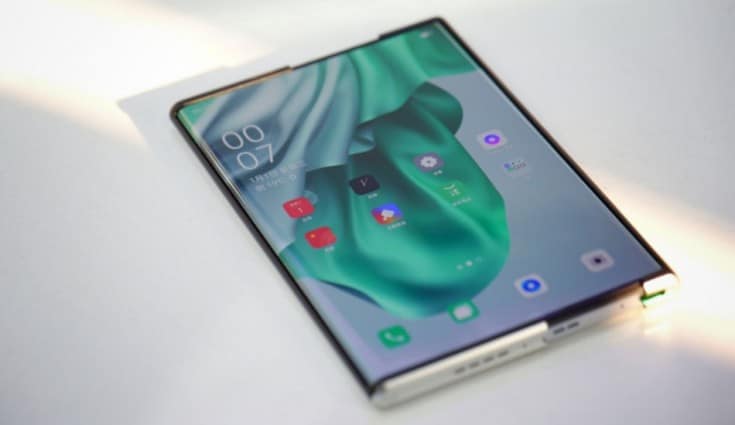As a truly vibrant mobile-first nation, Indians, across demographics, who have never used a desktop or a laptop, have been able to leapfrog to the digital world through smartphones and overcome their geographic and socio-economic barriers. Today’s smartphones are the conduit for consumers to enjoy an array of connected experiences. The timeline to the launch of 5G services in India is yet to be clear. However, research insights from CMR point to a strong consumer demand in the hyper-competitive smartphone market. Whether it be early technology adopters keen on embracing the latest tech, or premium smartphone users who look at their smartphones as an extension of their lifestyle, there is a strong consumer interest in embracing 5G-ready smartphones in India, with an eye on the future.
While 5G is nascent, our research at CyberMedia Research (CMR) has pointed out how early 5G consumers in China and Western Europe are leveraging 5G. As per our research findings, the most attractive benefit of 5G for early 5G smartphone users in a homebound economy, has been undoubtedly video, especially video creation and video consumption. Amidst COVID-19, 5G smartphone users have been able to do more, whether it be work from home, learn from home, or unwind at home.
In India, 5G readiness is one of the top three consumer considerations in the premium smartphone segment, alongside battery life, and smartphone brand imagery. Nearly three in every five existing premium smartphone users are definitely seeking to upgrade to 5G ready smartphones, betting big on the future.
The rise of 5G, coupled with Artificial Intelligence (AI), offers enormous potential and promise for transforming smartphones into truly intuitive and smart enablers of human lives.
The Promise of Video-Led Future
Through the course of 2020, consumers spent time indoors on their smartphones, creating, uploading, and sharing video content with their loved ones and the world. Our research findings point to a significant rise in short-form video content creation and consumption.

I believe the post-pandemic future will be essentially visual, and video-led. This video-led future will be made possible by 5G and AI that will enable creating amazing, immersive and clear videos, even in low light settings. Additionally, OEMs are also providing built-in apps for video content creation and editing. All of this will enable video content creators to shoot their own professional films using their smartphones, their ‘in pocket’ studio. For consumers, they will be able to stream and enjoy a consistently rich, high-quality video content, in the form that it was shot, without lags and glitches.
Our consumer research trends align with recent findings from Opensignal:
Opensignal data shows that 5G users on average consumed much higher amounts of mobile data compared to 4G users, suggesting that, by having a better experience, users consumed more content on their smartphones, or similar amounts of content at higher quality and resolution.
Our data suggests that, by enjoying on average a better mobile experience compared to 4G users, 5G users either consumed more content on their smartphones or enjoyed video and audio streams at a higher quality. For example, mobile video services are now likely sending high-resolution HD video where, on more congested 4G, they would only be able to stream lower quality video resolutions.
Enhanced Immersive Gaming Experiences
CMR’s research points out that today’s powerful smartphones have democratized mobile gaming across age groups, and consumer cohorts – from hyper-casual gamers to the serious gamers who have invested in gaming and have participated in gaming events. The pandemic has made gaming more social, with more consumers playing multi-player games today. Their experience can be enhanced with 5G’s blazing fast speeds, ultra-low latency, greater reliability, and increased capacities. 5G’s ultra-low latency will also enable consumers to play games anytime, anywhere on the cloud. It will contribute to more interactive and immersive gaming experiences, whether it be enhanced multi-player experiences or more augmented reality games. Thanks to 5G, location-based gaming, will enable the real and the virtual world to seamlessly blend.
Here’s Sanjay Bhatia, VP of Solutions Marketing and Strategy, Ribbon on their new report “American Gamers are All-In for 5G Action”
“These gamers know the upload and download speeds they are achieving with their current set-up, they know their Ping rates and they know what they want. They know that latency is the enemy of interactive online game playing and we discovered that in the US, only 3 percent of gamers are currently getting latency below the ten milliseconds that dedicated 5G gaming connections could deliver. In fact, with the average latency lag experienced by US gamers coming in at more than 40 milliseconds, 5G has plenty of headroom to significantly improve the live online gaming experience.”
5G and India
India stands at the cusp of a significant and robust digital transformation in the post-virus era. This is primarily enabled by the convergence of enabling technologies, such as 5G, Cloud, Artificial Intelligence, IoT, and Edge Computing. Enterprise 5G will impact all the major industry sectors, cutting across manufacturing, education, retail, agriculture, transportation, and smart cities, among others.
As we move ahead, 5G is the key to foster greater digital inclusion, and for ensuring India’s competitiveness. For the success of India’s digital economy, India would need to address the prevailing infrastructural and business challenges by enabling collaborative approaches involving the public and private sector for fostering 5G adoption.
The Government has taken a leadership mantle for ensuring that India will be able to enjoy 5G’s transformative potential. The roll-out of 5G will enable India to realize PM Modi’s Digital India vision and to transform India technologically and economically.
At the recent virtual India Mobile Congress 2020, PM Narendra Modi said:
“We need to work together to ensure a timely roll out of 5G to leapfrog into the future and empower millions of Indians.”
Telecom Minister Ravi Shankar Prasad said
“We are also keen that India must be 5G ready and for that test beds have been created and provision will be unfolded further.”
Alongside the Government, initiatives by the private sector in enabling smart device and chipset technology will collectively fuel the 5G growth.
Interestingly enough, our research results point to a heightened consumer excitement, awareness and optimism around 5G smartphones in India. Early technology adopters, and premium smartphone users in India are seeking to upgrade to 5G-ready smartphones driven by the urge to future-proof themselves. While doing so, they seek to benefit from the overall user experience that the device offers.
As we move forward, consumers everywhere are excited and eagerly looking forward to enjoying ubiquitous, anytime, anywhere, high-quality experiences on their smart devices, whether it be creating, uploading and sharing videos seamlessly, console-quality mobile gaming, or enjoying AR/VR experiences. 5G is key to enabling these seamless consumer experiences and meeting the latency, reliability and throughput they require.
As we move into an era of smart connectivity, 5G will enable telecom operators and OEMs to gain new competencies. Doing so will enable the telecos to re-envision their value proposition for their enterprise customers, from being connectivity suppliers to becoming truly innovative digital partners. To accomplish this historic business transformation, telecom operators will need to engage more closely with their enterprise clients, understand their unique requirements, and offer customized solutions, and answer their concerns.
When it comes to OEMs, they are already paving the roadmap for a consumer 5G future. They are working to introduce innovative and future-ready devices for the consumers. It is pertinent to note that brands are not just launching products that are 5G-enabled, but also come with features such as video, AI, gaming, among others, that enhance the overall experience that the user has.



